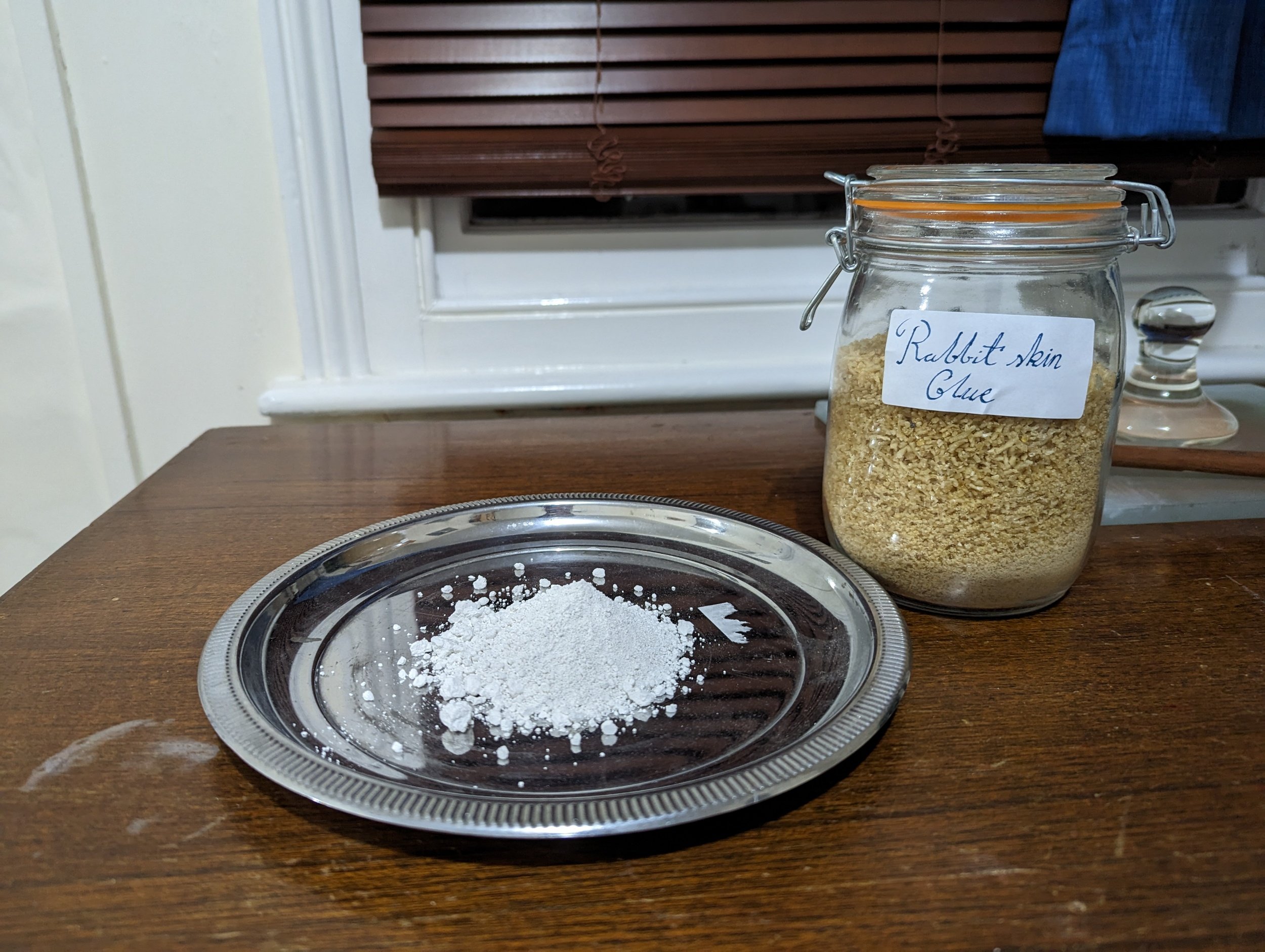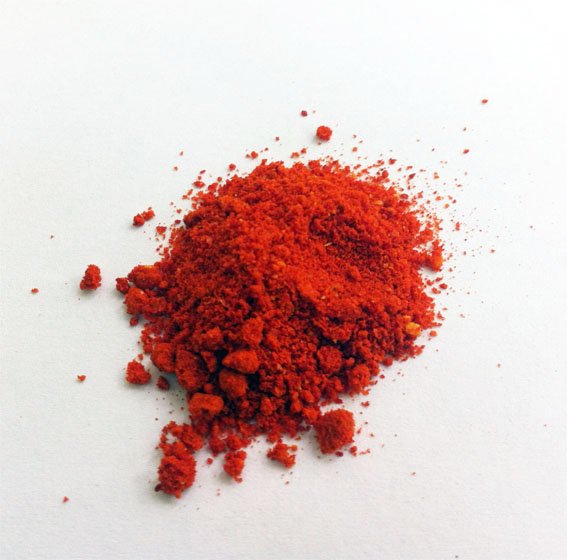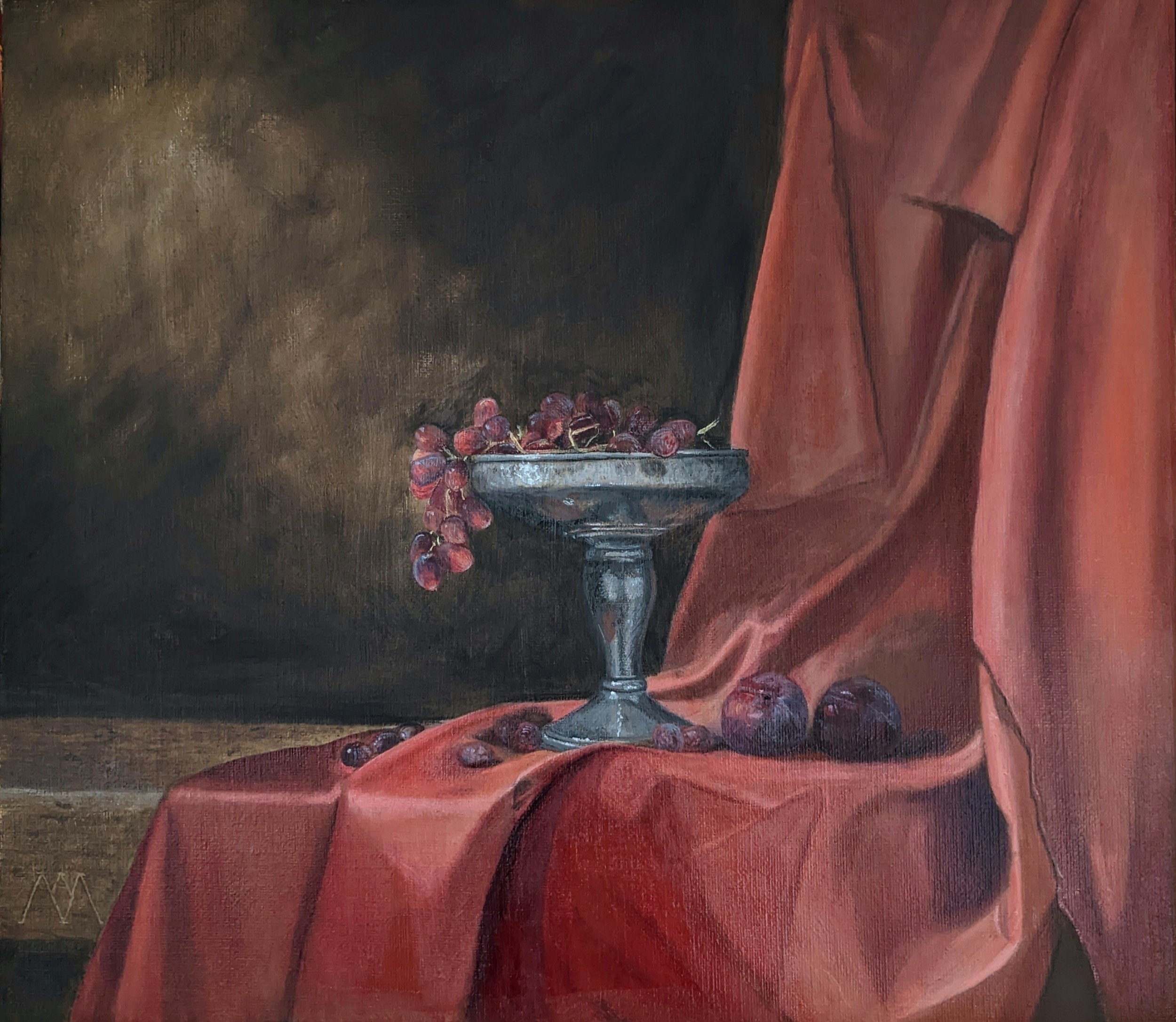News & Blog

How to paint like Caravaggio: Master copy of “Narcissus”
In this article, I will talk through my thinking and painting process for a study I completed a few years ago of Caravaggio’s “Narcissus”. Copying this painting provided insights in to this more Baroque manner of painting - compared to, for example, some of the more Northern European style work - which employs different techniques.

How to prepare a panel for oil painting
Have you ever imagined the surfaces upon which the masterpieces of Giotto, Leonardo, and Raphael are painted? Have you ever wondered how these were prepared, or where they came from? Have you ever fancied yourself painting onto an exquisite, ivory-like surface rather than the dull, mass produced cotton canvases from your local art shop?
Read on to learn the traditional methods for making your own rabbit skin glue (size), gesso (primer) and applying it to a wooden panel for oil painting. It’s worth the time and effort, I promise.

What is gesso?
Literally translated, gesso is Italian for chalk, plaster, or gypsum. In practice, this is reasonably representative of what it materially is. Indeed, the key ingredients in gesso are chalk (or other calcium-based minerals) and a binder.

What is vermilion?
Vermilion is a beautiful, vibrant red pigment that is synonymous with the riches of Medieval and Renaissance art. Think of Van Eyck’s Lucca Madonna, Titian’s ‘Assumption of the Virgin’, or Raphael’s ‘Small Cowper Madonna’. In this article I describe what vermilion is chemically and summarise its fascinating history as a pigment.

A study in scarlet - painting with historical reds
A study of two of the most beautiful red pigments in history - vermilion and cochineal lake (carmine). Read on to see how lessons can still be learned from the old masters such as Jan van Eyck and applied in contemporary art today.